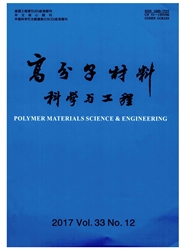

 中文摘要:
中文摘要:
利用MATLAB软件对低压片状模塑料(LPMC)平板模具进行了热传导分析和热优化设计。并对常规加热模具和经热优化设计后的模具压制的平板件的弯曲性能进行了对比,同时还对试样断裂面进行了扫描电镜分析。结果表明,LPMC的热传导性能与传统SMC不同,其中有结晶树脂吸热产生相转变的过程。优化模具中的加热管分布后,片材在固化过程中模具表面温度分布比较均匀,温度差在3℃以内。经过热优化设计的模具压制的试样中心和角处的弯曲强度比较接近,能达到170MPa左右。中心和角处试样弯曲断裂面纤维分布均匀、含量高,与树脂粘接良好。
 英文摘要:
英文摘要:
Heat transferring and thermal design of the steel die for low pressure sheet molding compound were analyzed and optimized by MATLAB software. The flexural properties of specimens, molded by normal and thermal deign optimized die respectively, were compared. In addition, the fracture surfaces were carefully analyzed by SEM. Results show that LPMC and traditional SMC differ in the heat transferring property. In the molding process, there occur phase transition by the decalescence of crystalline polyester. When the distribution of the heating pipes in the steel die was optimized, the surface temperature of the steal die was much even during the curing of LPMC, and the difference in temperature was limited in 3 12. The flexural strength of the specimens, cut from the center and the corner of the parts molded by thermal optimized die, was almost the same. They could reach about 170 MPa.
 同期刊论文项目
同期刊论文项目
 同项目期刊论文
同项目期刊论文
 期刊信息
期刊信息
